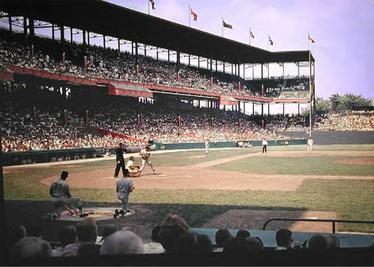Aloe Plaza dedicated 70 years ago today

Saturday May 11, 1940 the public plaza known as “Aloe Plaza” was dedicated – seventy years ago today.The population in 1940 was 816,048, more than double our current population.
Located across Market St from Union Station, Aloe Plaza, has a long history:
The central corridor of St. Louis, from Tucker Boulevard (formerly Twelfth Street) on the east to Grand Boulevard on the west, was densely populated at the turn of the twentieth century. The area was a mixture of mansions and tenements, shops of all kinds, businesses, factories, dance halls, taverns, clubs, restaurants, churches, schools and other institutions.
Civic Improvement League, organized in 1901, called for razing the area to create a central parkway. The 1920s saw the clearing out of a portion of the area with the creation of the Soldiers Memorial and Plaza, Kiel Auditorium, the widening of Market Street and the construction of the Aloe Plaza opposite Union Station.
Development of the Aloe Plaza was made possible by an $87 million bond issue in 1923. The funds were used for widening Olive Street and the clearance and development of land for several plazas in the area bounded by Market, Chestnut, 12th and 20th Streets.
Aloe Plaza was named in honor of Louis P. Aloe, who died in 1929. He served as President of the Board of Alderman from 1916 to 1923 and led the movement for passage of the bond issue.
In 1909 the two block area that would become Aloe Plaza contained many buildings, including seven hotels:

The story of why the Civic Improvement League targeted this area for redevelopment is fascinating and unknown to me until yesterday. A shooting in St. Louis led to the song Frankie and Johnny and several movies. Here is the history as told on the Wikipedia entry for the song:
It has been suggested that the song was inspired, or its details influenced, by one or more actual murders. One of these took place in St. Louis, Missouri, on October 15, 1899, when Frankie Baker, a 22-year-old dancer, stabbed (or shot) her 17-year-old lover Allen “Al” Britt, who was having a relationship with a woman named Alice Pryor. Britt died of his wounds two days later. On trial, Baker claimed that Britt had attacked her with a knife and that she acted in self-defense; she was acquitted and died in a Portland, Oregon mental institution in 1952.
The shooting took place at a boarding house on a street the ran perpendicular to Market St between 14th & 15th. This street was later eliminated from the grid for the construction of the Kiel Opera House, which opened in 1934. To the west at 18th you had Union Station which had opened just 5 years prior to the shooting in 1894. Visitors arrived in St. Louis via train but civic leaders didn’t like the elements that surrounded the station. Reasons given was the area was rundown and dangerous — I think it was because the area was predominantly black. At a time when segregation was the norm, St. Louis didn’t want to welcome visitors to the black part of town. Keep in mind the new train station was far west when built.
The song was a huge hit with many variations and led to films in 1936, 1966 and 1991. Here is the trailer to the 1966 film starring Elvis Presley:
httpv://www.youtube.com/watch?v=6IDmVrECDi4
The actual people involved in the 1899 shooting were black, not white.

The city’s 1947 Master Plan indicates “The Aloe Plaza and Milles Fountain make a distinguished gateway to the city.” The cost listed was $2,600,000. The sculpture and fountain by Milles was controversial at the time:
The fountain, originally named “The Wedding of the Rivers,” depicts the union of the Missouri and the Mississippi Rivers, represented by the two central figures. Accompanying the two main figures and forming a wedding procession are 17 water spirits, symbolic of the smaller streams that empty into the two major rivers.
An uproar arose over the nudity of the male figure, representing the Mississippi River and the female figure, the Missouri River. In deference to the criticism, the name of the fountain was changed to ,”The Meeting of the Waters.”
I think we should restore the name to “The Wedding of the Rivers” as originally intended by Miles.

Note that when Aloe Plaza was dedicated 70 years ago the buildings along the riverfront were just being razed. The competition that gave us the Arch wasn’t held until 7 years later. Clearly the city was busy razing buildings in many areas. Despite my issues with the bad planning and reactionary policies that got us to today, the sculpture and fountain in Aloe Plaza always make me smile.
– Steve Patterson



